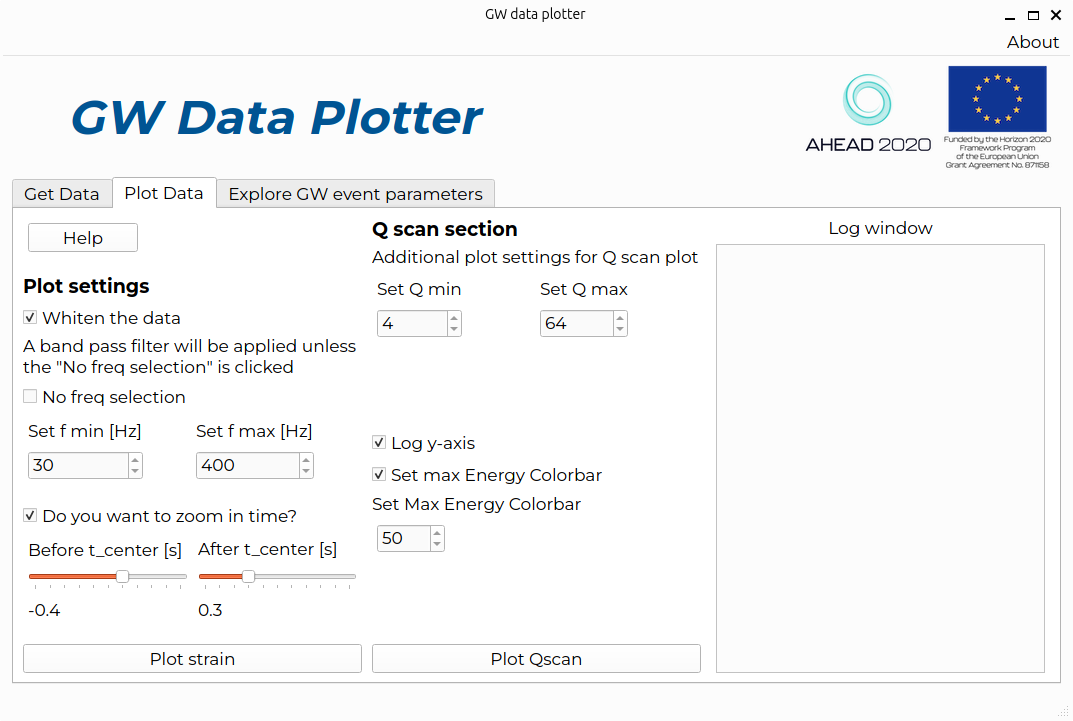Plot Data¶
The Plot Data tab allows users to visualize the GW data.

Strain and Q scan¶
You can plot the data in two different ways, via the corresponding buttons:
Plot strain allows you to plot the gravitational wave data (called strain) as a function of time.
Plot Qscan allows you to plot the time-frequency evolution of the gravitational wave data.
In particular, we use a time-frequency representation commonly used by the GW community based on the Q-transform (see also this paper).
This plot depends on a quality factor Q. Check this tutorial to help you choose the right Q value for your plot.
Plot settings¶
Under the Plot settings section, the user can select plotting options that apply to both plots:
A check box can be used to indicate whether to whiten the data or not (see also Whitening).
A bandpass filter will be applied unless the No freq selection is clicked (band passing is filtering within a specific frequency range). The user can choose the frequency range with which to filter the data.
To zoom in time users can select a time window using as reference the central time of the available segment.
Under the Q scan section, the user can select additional settings, specific to the Q scan plot:
Set the maximum and minimum values of Q.
Set the y-axis to log scale.
Set the maximum energy for the colour bar.
Notes on plotting¶
After changing the parameters, click the buttons Plot Qscan and Plot Qscan again to update the plots.
If you have downloaded data for GW events or glitches from the dropdown menus, the default values of all the plot settings will be automatically fixed to the values that allow optimal plots. In addition, the x-axis representing time will have its zero at the expected time of the merger for the GW event or at the central time for the glitch (what is called
event_timein the GravitySpy repository).Only the most loud events, i.e. events with a high signal-to-noise ratio, are visible by eye with the minimal post-processing allowed by this app.